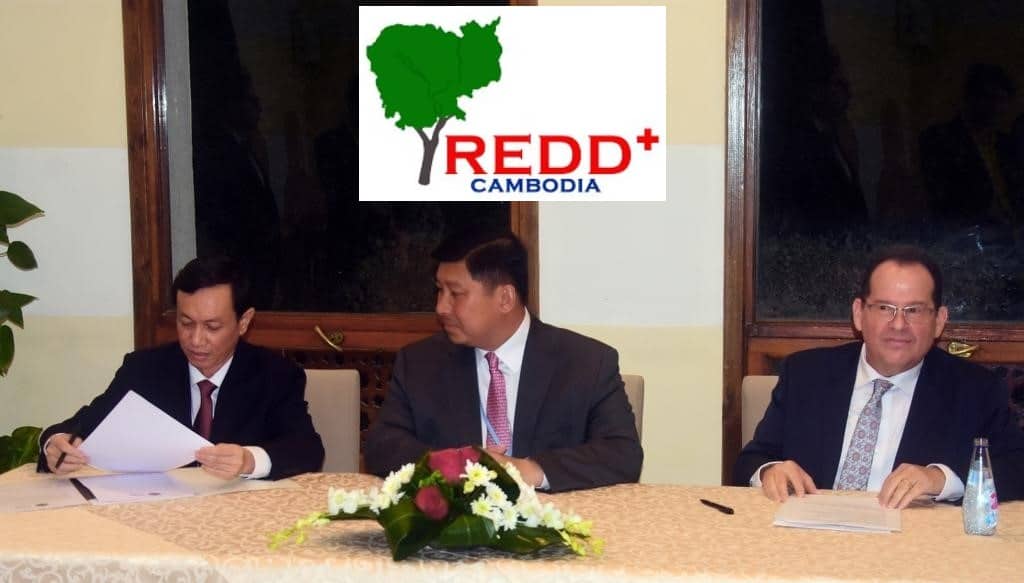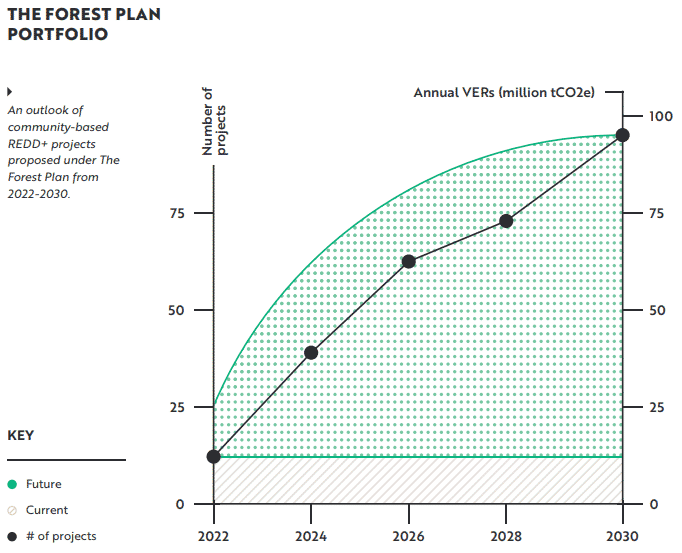At COP27’s talk to end deforestation, Cambodia agreed to sign contracts with international corporate buyers for about 15 million tonnes of Verified Emission Reductions (VERs) or carbon credits from the country’s landmark REDD+ projects.
The announcement from Cambodia shows a groundbreaking collaboration among the government, NGOs, local communities, and large companies, to end deforestation. It represents an effective way to address deforestation while driving investments for sustainable development.
The Royal Government’s Ministry of Environment will be signing agreements with a group of leading corporations that will buy the carbon credits from three of Cambodia’s REDD+ projects developed by the Wildlife Conservation Society and Wildlife Alliance.
Cambodia, REDD+ and Carbon Credits
Deforestation and forest degradation are some of the biggest contributors to the climate crisis, representing over 10% of all emissions. And it will be impossible to achieve the 1.5°C warming goal without ending emissions from forest loss by 2030.
- The UN Conference of the Parties (COP) created the REDD+ framework. It refers to Reducing Emissions from Deforestation and Forest Degradation, with the role of conservation, sustainable management of forests, and enhancement of forest carbon stocks in developing countries.
REDD+ is a climate change mitigation strategy that allows communities and governments to gain payments from the voluntary carbon markets for emissions reductions achieved through forest protection projects. These projects tackle the main culprits of deforestation.
REDD+ projects allow stakeholders to get value from protecting and conserving their forestlands. And the government of Cambodia finds REDD+ and the carbon credits the projects generate relevant to their cause.
According to the country’s Minister of Environment, Dr. Say Samal, project-based REDD+ is an essential part of Cambodia’s strategy to achieve its nationally determined contributions (NDCs). The mechanism also ensures that the communities have enough resources to deliver the projects.
He also said that:
“Funds generated from VER sales help Cambodia’s Ministry of Environment enact effective policies that support our country’s efforts to reduce deforestation, including our transition to a nested jurisdictional REDD+ program. At a time when the world is struggling to meet the commitments enshrined in the Glasgow Leaders’ Declaration on Forests and Land Use, Cambodia’s experience demonstrates how project-based REDD+ can help countries like ours, which are ready to preserve its forests, to secure immediate, sustainable, and large-scale financing…”
Protecting Forests With Carbon Credits (VERs)
By closing the deals, the Cambodian government managed to have critical financing to protect its vulnerable forests. It will help support local communities working on the frontline to end deforestation.
The sales from REDD+ carbon credits were part of Everland’s offering. Last June, the forest conservation company revealed its “Forest Plan”. It’s an action plan by Everland to end deforestation by developing up to 75 REDD+ projects worldwide.
Here’s how the plan will look like for REDD+ projects until 2030.
Those community-based forest projects will protect a total of about 50.5 million hectares. They represent 17% of deforestation in 15 critical forest nations, which include Cambodia. Other countries are Brazil, Indonesia, Papua New Guinea, and the Democratic Republic of the Congo.
The government of Cambodia selected Everland to market the carbon credits from its REDD+ projects with large global corporations as buyers. The offering yielded a total bid of 15 million tonnes of emission reductions.
The corporate buyers will use the VERs as part of their strategy to offset unavoidable emissions. All the while contributing to wildlife protection and community development.
Proceeds from the carbon credit sales will be used to:
- scale up site-based activities within the REDD+ project landscapes,
- strengthen local and community-based institutions to govern community-level revenue sharing,
- increase access to jobs, education, and healthcare for the local communities, and
- secure the long-term financial stability of the projects in Cambodia.
Scaling up REDD+ Programs in Cambodia
Cambodia has been scaling up its REDD+ program by expanding its portfolio of projects. This is done through the help of its major project developer partners, including the Wildlife Conservation Society (WCS) and Wildlife Alliance.
The Ministry of Environment has implemented three REDD+ projects since 2016. These projects are in Keo Seima, the South Cardamoms and Prey Lang, covering an area of 1.27 million hectares.
So far, the projects have received around $11.6 million from the sale of carbon credits. The revenues are all reinvested in further environmental conservation.
The ministry is also preparing for an additional REDD+ project on 1.19 million ha. This will bring the total REDD+ project area to over ⅓ of Cambodia’s protected areas.
With these programs, the CEO of Wildlife Alliance Suwanna Gauntlett commented at the COP27 discussion:
“Cambodia’s REDD+ projects adhere to the most rigorous monitoring, evaluation, and independent verification processes. They produce high-quality verified emissions reductions that protect forests, reduce emissions, and safeguard the populations of endangered species in addition to ensuring services and livelihoods for forest communities…”
She also said that those benefits only show the forest nations that they can seek economic growth while preserving the natural beauty of their countries at the same time.



